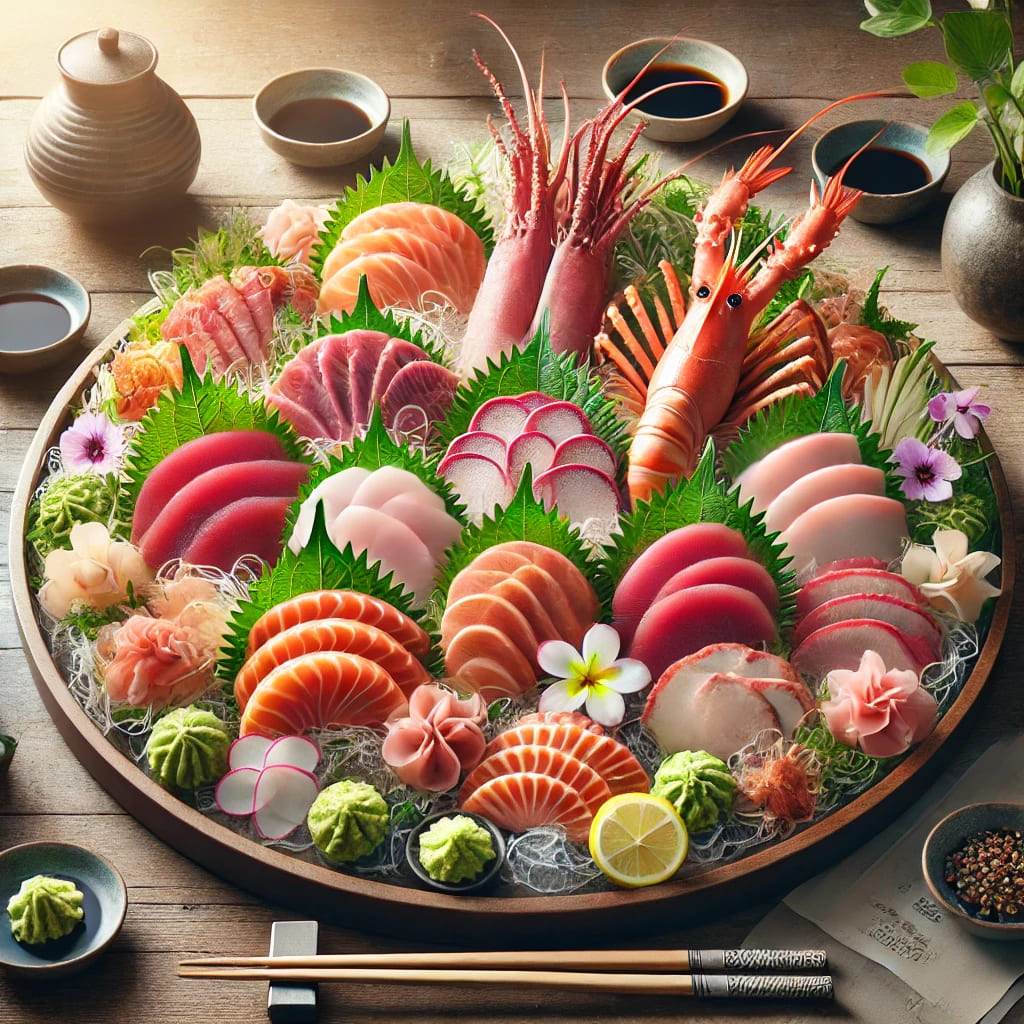Chamberlains of London – Sashimi, a beloved Japanese delicacy, offers a pure and simple way to savor the natural flavors of raw fish and seafood. Preparing and enjoying sashimi at home can be a delightful experience, blending culinary skills with cultural appreciation. Here is a comprehensive guide to help you enjoy sashimi in the comfort of your home. Sashimi refers to thinly sliced raw fish or seafood, served with minimal accompaniments to highlight its freshness and flavor. Popular sashimi options include salmon, tuna, mackerel, yellowtail, and shellfish like scallops or octopus. Unlike sushi, sashimi is not served with rice, making it a lighter dish focused entirely on the protein.
Choosing the Right Fish


The foundation of good sashimi is the quality of the fish. Look for seafood labeled as “sashimi-grade” or “sushi-grade.” These terms indicate the fish has been processed and frozen according to standards that minimize the risk of parasites.
- Visit a Reputable Supplier: Seek out a trusted fish market or Asian grocery store specializing in sashimi-grade fish.
- Inspect the Fish: Fresh sashimi-grade fish should smell clean, have a firm texture, and appear vibrant in color.
- Ask for Advice: Don’t hesitate to ask the fishmonger for recommendations based on availability and quality.
Essential Tools and Ingredients
Preparing sashimi requires a few essential tools and ingredients to ensure a restaurant-quality experience.
- Knife: A sharp, long knife like a yanagiba (Japanese sashimi knife) is ideal for making clean cuts.
- Cutting Board: Use a dedicated cutting board to prevent cross-contamination.
- Accompaniments:
- Soy Sauce: Opt for a high-quality, naturally brewed soy sauce for dipping.
- Wasabi: Fresh wasabi root or quality paste enhances the flavor of the fish.
- Pickled Ginger: Cleanses the palate between bites.
- Shiso Leaves: Adds a refreshing herbal note.
- Daikon Radish: Often julienned and used as a garnish.
Preparing the Fish


The preparation process is crucial for achieving the delicate texture and taste of sashimi.
- Thaw Properly: If your fish is frozen, thaw it slowly in the refrigerator to preserve its quality.
- Slice with Precision: Cut the fish against the grain to maintain tenderness. Slices should be uniform in thickness, typically around 5-7 millimeters.
- Presentation Matters: Arrange the slices beautifully on a chilled plate, garnished with shiso leaves or daikon radish.
Setting the Table
Creating an authentic sashimi dining experience involves attention to detail in presentation and table setup.
- Serve Chilled: Keep the fish cool to maintain its freshness.
- Small Dishes for Dipping: Provide individual dishes for soy sauce to avoid cross-dipping.
- Chopsticks: Use wooden or bamboo chopsticks for an authentic touch.
Pairing with Beverages


The right beverage can elevate your sashimi experience. Traditional pairings include:
- Green Tea: A classic choice that complements the fish’s natural flavors.
- Sake: Opt for dry or slightly sweet sake to balance the umami of the fish.
- White Wine: A crisp, dry white wine like Sauvignon Blanc or Chardonnay pairs well with sashimi.
Exploring Variations
Sashimi doesn’t have to be limited to fish. Experiment with other types of raw seafood or even plant-based options.
- Seafood Options: Try scallops, squid, or uni (sea urchin) for variety.
- Vegetarian Sashimi: Use ingredients like thinly sliced avocado, beets, or king oyster mushrooms as a plant-based alternative.
Sashimi is more than just a meal it’s an experience. Take your time to appreciate the textures and flavors of each bite. Pair your sashimi with good company and a calm setting to fully embrace the art of Japanese dining at home.

